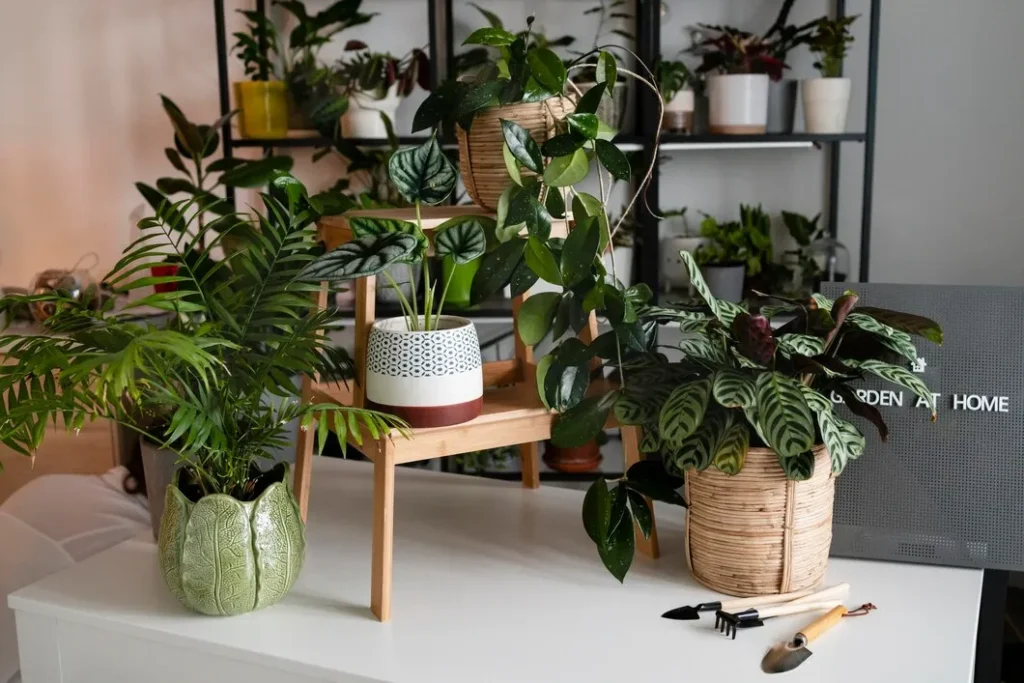Impact Of Indoor Plants On AC Unit Performance
Indoor plants can be a delightful addition to any home, offering both aesthetic pleasure and potential health benefits by purifying the air. However, homeowners often overlook how these green companions can affect the performance of heating, ventilation, and air conditioning (HVAC) systems. At Infinity Texas Air, we understand the importance of maintaining an optimal home environment, balancing both comfort and efficiency. This is why it’s crucial to understand the interplay between your indoor plants and your AC unit.
Plants influence indoor air qualities in various ways, which can directly and indirectly impact HVAC performance. While plants are generally beneficial for air quality by releasing oxygen and absorbing carbon dioxide, they also release moisture and can block airflows if not properly placed. These factors can lead to adjustments in how we manage our AC units and may necessitate additional considerations for HVAC maintenance.
Explore the specifics of how indoor plants can affect your HVAC system. Understanding these interactions can help you make informed decisions on plant placement and care, ensuring that your home remains comfortable and your AC unit runs efficiently.
How Plants Affect Airflow And Indoor Humidity Levels?
Indoor plants not only enhance the ambiance of your living spaces but also actively interact with your home’s air dynamics. One of the most significant ways plants can influence your daily environment is through their effects on airflow and humidity. Plants naturally release moisture into the air through a process called transpiration. This can be beneficial, especially in drier climates or during winter months when heated indoor air tends to become excessively dry. However, in already humid conditions, excessive plant transpiration can contribute to higher humidity levels, which may cause your air conditioning (AC) unit to work harder to maintain comfortable temperature levels.
The position of plants in relation to your AC unit and air vents also plays a crucial role in airflow. Large plants or clusters of plants can obstruct air paths, disrupting the efficient flow of air through your space. This blockage can lead to uneven temperature distribution, prompting some areas to feel cooler or warmer than others, and can force your AC system to overcompensate, increasing energy usage and wear on the system. By strategically placing plants away from direct paths of vents, you can avoid these airflow disruptions and aid in maintaining an efficient HVAC system.
Potential Challenges Of Indoor Plants Near AC Units
While plants are beneficial for air quality, their proximity to AC units can pose several challenges that may affect the performance and maintenance of your HVAC system. For instance, foliage and soil can become sources of debris that might clog air filters or vents if located too close to your AC unit. This accumulation of plant-related debris can restrict airflow, reducing your system’s efficiency and increasing your energy costs.
Additionally, the moisture from plants can also contribute to increased humidity around the AC unit. This excess moisture can lead to condensation within the system, potentially causing rust or mold growth that can damage components and degrade air quality. If these issues are not addressed timely, it might lead to expensive repairs or even the need for premature replacement of parts or the entire unit.
Our professionals recommend maintaining a reasonable distance between your plants and the AC unit and regularly checking and cleaning the surrounding area to ensure optimal performance and prevent any potential issues. This careful management ensures that your indoor plants and AC systems can coexist without negatively impacting each other’s functionality.
Best Practices For Balancing Plant Benefits And AC Efficiency
Balancing the benefits of indoor plants with the efficiency of your AC unit requires thoughtful placement and maintenance. To ensure your home environment remains both green and efficient, here are some practices you can follow. Firstly, consider the size and type of plants. Large leafy plants which transpire more might affect humidity levels significantly, so they should be placed in larger, open areas away from direct airflow from AC vents. Succulents and other low-water varieties, on the other hand, are less likely to alter indoor humidity levels drastically and can be more flexible in placement.
Secondly, maintain a routine check on your HVAC system’s filters, especially if you have many indoor plants. Plants can shed leaves and soil, contributing to debris that can clog filters. Regular filter checks and changes can prevent this buildup and keep your system running efficiently. Lastly, consider using a dehumidifier if you have a large number of plants in a confined area. This can help regulate the humidity levels in your home, making it easier for your AC unit to maintain a comfortable temperature without overworking.
Maintaining Wellness With Indoor Plants And Efficient HVAC Systems
Creating a healthy and energy-efficient home environment is a balance. While indoor plants enhance indoor air quality and personal well-being, they require some considerations to coexist effectively with HVAC systems. At Infinity Texas Air, our goal is to help you maintain this balance with ease. Our professionals are skilled in advising on the best HVAC practices for homeowners who love indoor greenery without compromising their system’s efficiency.
Remember, regular maintenance and strategic placement of plants and HVAC elements go a long hand in ensuring optimal performance and longevity of your equipment. If you’re unsure about the setup or need a check-up to ensure everything is running as it should, do not hesitate to contact us. At Infinity Texas Air, we are dedicated to ensuring your living space is as comfortable and efficient as possible. Reach out today, and let us help you harmonize your green lifestyle with top-notch HVAC services in Rockwall, TX!




